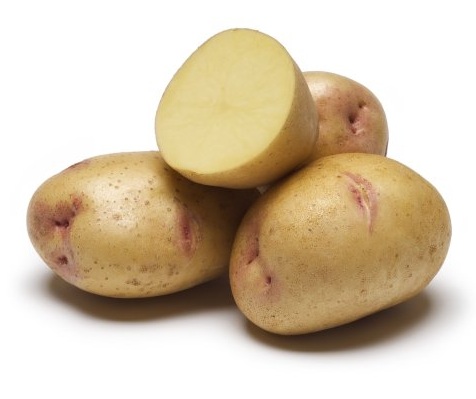
Features
Production
Research
Golden success for Yukon Gem
June 11, 2009 By USDA Agricultural Research Service
 June 11, 2009, Aberdeen, ID – A potato called Yukon Gem is attracting attention with its light-yellow flesh and tastiness.
June 11, 2009, Aberdeen, ID – A potato called Yukon Gem is attracting attention with its light-yellow flesh and tastiness.
June 11, 2009, Aberdeen, ID – A potato called Yukon Gem is attracting attention with its light-yellow flesh and tastiness.
 |
|
Smooth-skinned and medium-sized, Yukon Gem potatoes can be baked, roasted, boiled, or processed into golden chips or fries, according to geneticist Richard G. Novy and plant pathologist Jonathan L. Whitworth, both with the Agricultural Research Service (ARS) Small Grains and Potato Germplasm Research Unit in Aberdeen, Idaho.
Novy, Whitworth, and two now-retired Aberdeen researchers – Joseph J. Pavek and Dennis L. Corsini – tested and evaluated this niche-market tuber for more than a decade before determining, in 2006, that it was ready to offer as a named variety to potato growers, producers of potato seed, and potato breeders and researchers.
Last year, Yukon Gem was planted on a total of 32 acres in five western states. That's a respectable figure for a specialty potato still considered a relative newcomer to the potato industry. The acreage was enough to produce seed for plants that, in all, could yield a total of at least 41 million Yukon Gem potatoes.
Yukon Gem got its start in North Dakota as one of many unnamed, untested offspring of Yukon Gold and Brodick, a disease-resistant potato from Scotland. In 1995, the Aberdeen scientists selected it from among thousands of other potatoes they were evaluating in their research fields in Idaho. They gave it the designation NDA5507-3Y and evaluated it in rigorous field trials over 11 years in five states.
Colleagues from state universities in Idaho, Oregon and Washington – participants in what’s known as the Northwest Potato Variety Development Program – were among the collaborators in evaluations that led to the tuber's naming and eventual release.
In the field tests, Yukon Gem’s impressive yields averaged 12 per cent higher in eastern Idaho, 22 per cent higher at test sites in Washington, and 41 per cent higher in parts of Oregon than its Yukon Gold parent. Also, Yukon Gem showed notable resistance to many of the microbes that cause costly diseases such as dry rot, and both foliar and tuber late blight.
Print this page